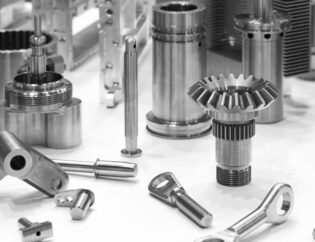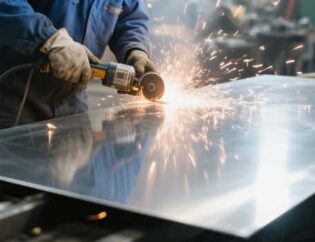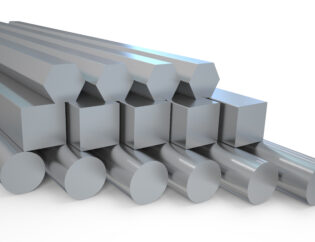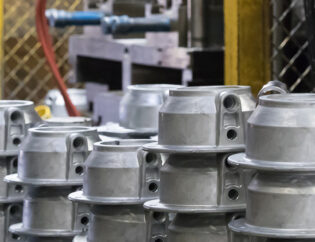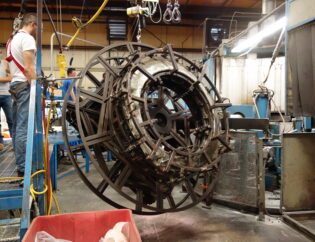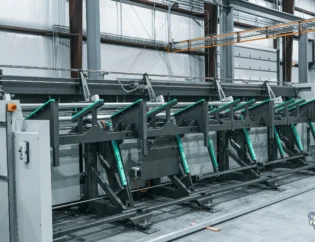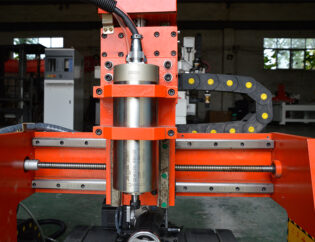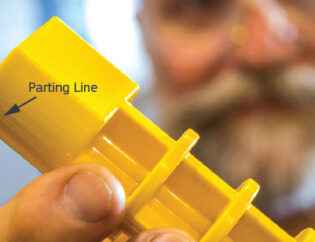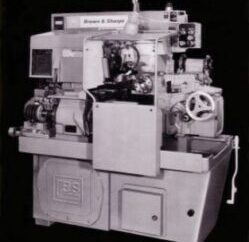In the world of precision manufacturing, CNC mills play a pivotal role in transforming raw materials into intricate components. Understanding the various parts of a CNC mill is essential for anyone involved in machining, whether you’re a novice or an experienced operator. This guide will delve into the key components, their functions, and how they contribute to the overall efficiency of the milling process.
Readers can expect to gain a comprehensive understanding of each part, from the spindle and table to the control systems and tooling. By familiarizing yourself with these elements, you will enhance your ability to troubleshoot issues, optimize performance, and improve machining accuracy. This knowledge is crucial for maximizing productivity and ensuring high-quality output in any CNC milling operation.
As we explore the intricacies of CNC mills, you will also discover best practices for maintenance and operation. This guide aims to empower you with the insights needed to make informed decisions, whether you’re programming a new job or performing routine upkeep. Join us on this journey to unlock the full potential of CNC milling technology.
Key CNC Mill Parts: A Comprehensive Guide
CNC milling machines are one of the most popular tools for machining metals to achieve the desired workpiece. These rigid and powerful machines consist of various parts that work in synchronization to perform the desired milling operation. Understanding the key components of a CNC mill is essential for anyone involved in machining, whether you’re a beginner or an experienced operator.
Overview of CNC Milling Machines
CNC (Computer Numerical Control) milling machines automate the process of cutting and shaping materials. They utilize a rotating cutting tool to remove material from a stationary workpiece, allowing for high precision and repeatability. The main components of a CNC milling machine include the CNC controller, column, base, knee, power feed mechanism, work table, ram, spindle, and various accessories.
Technical Features of CNC Milling Machines
Here’s a comparison of the technical features of CNC milling machines:
| Feature | Description | Importance |
|---|---|---|
| CNC Controller | The brain of the machine that interprets G-code and controls movements. | Essential for automation and precision. |
| Column and Base | Provides structural support and houses the coolant system. | Ensures stability and reduces vibrations. |
| Knee | Allows vertical movement of the work table. | Facilitates precise height adjustments. |
| Power Feed Mechanism | Controls the movement of the work table in three dimensions. | Enhances efficiency and accuracy. |
| Spindle | Holds and drives the cutting tool. | Critical for tool performance and cutting speed. |
| Work Table | The surface where the workpiece is mounted. | Provides a stable platform for machining. |
| Ram | A movable arm that supports the milling head. | Increases the range of motion for larger parts. |
| Overhanging Arm | Supports the milling tool in horizontal machines. | Essential for stability in horizontal milling. |
Types of CNC Milling Machines
CNC milling machines come in various types, each designed for specific applications. Here’s a comparison of the different types:
| Type | Description | Applications |
|---|---|---|
| Vertical Milling Machine | Features a vertically oriented spindle. | Ideal for precision work and complex shapes. |
| Horizontal Milling Machine | Has a horizontally oriented spindle. | Suitable for heavy-duty machining and large parts. |
| Benchtop Milling Machine | Compact and portable, designed for small workshops. | Great for hobbyists and small-scale production. |
| CNC Router | Uses a rotating bit to cut materials like wood and plastic. | Commonly used for engraving and sign-making. |
| 5-Axis Milling Machine | Allows movement along five different axes. | Used for complex geometries and intricate designs. |
Key Components Explained
CNC Controller
The CNC controller is the heart of the milling machine. It converts digital designs into mechanical movements, interpreting G-code to control the machine’s operations. Advanced controllers offer features like real-time feedback and error detection, enhancing precision and reliability.
Column and Base
The column and base are typically made of cast iron, providing the necessary rigidity to support the machine’s weight. The base absorbs vibrations, while the column houses the oil and coolant systems, ensuring smooth operation.
Knee
The knee is a crucial component that allows vertical movement of the work table. It can be adjusted manually or automatically, depending on the machine’s design. This feature is essential for achieving the desired cutting depth.
Power Feed Mechanism
This mechanism controls the movement of the work table in three dimensions. It allows for precise adjustments and can be operated manually or automatically, depending on the machine’s capabilities.
Work Table
The work table is where the machining takes place. It features T-slots for clamping workpieces securely. The table’s movement is controlled by the power feed mechanism, allowing for accurate positioning during machining.
Spindle
The spindle holds the cutting tool and is responsible for its rotation. It can be powered by either servo or stepper motors, with the choice depending on the required precision and application.
Ram and Overhanging Arm
The ram is a movable arm that supports the milling head, allowing for extended reach over the work table. The overhanging arm serves a similar purpose in horizontal milling machines, providing stability and support for the milling tool.
Conclusion
Understanding the key parts of a CNC milling machine is essential for anyone involved in machining. Each component plays a vital role in ensuring the machine operates efficiently and accurately. Whether you’re considering purchasing a CNC mill from www.cncmasters.com or exploring options on mellowpine.com, knowing these parts will help you make informed decisions.
FAQs
1. What is the main function of a CNC controller?
The CNC controller interprets G-code and controls the movements of the milling machine, ensuring precise machining operations.
2. How does the knee affect the milling process?
The knee allows for vertical adjustments of the work table, enabling precise control over cutting depth and positioning.
3. What materials are typically used for the column and base?
Columns and bases are usually made of cast iron for rigidity and vibration dampening, sometimes filled with epoxy granite for enhanced performance.
4. What are the advantages of a 5-axis milling machine?
5-axis milling machines allow for complex geometries and intricate designs, making them ideal for advanced machining applications.
5. Where can I find more information about CNC milling machines?
You can explore detailed guides and resources on websites like www.cnccookbook.com and www.xometry.com for comprehensive insights into CNC milling technology.

